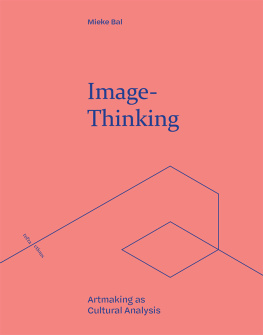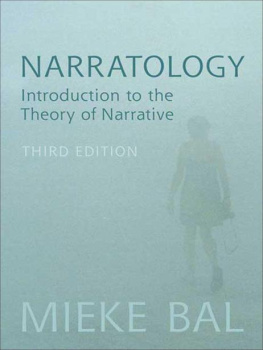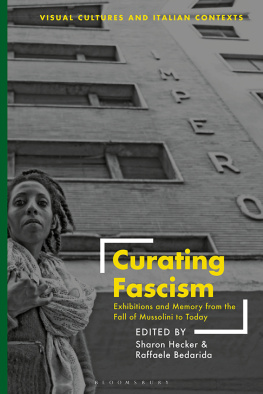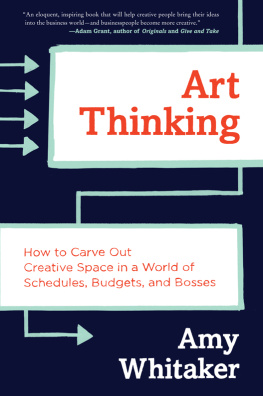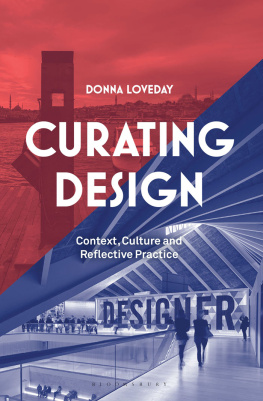
Refractions
At the borders of art history and philosophy
Series editor: Kamini Vellodi, University of Edinburgh
Poised at the threshold of art history and philosophy, Refractions offers a space for intellectually adventurous work that engages the theorisation of art and image as a persistent provocation for our times.
The series captures the character of inquiry as refractive, forging resonances and oblique intersections between diverse zones of thought, while fostering breakaway strands of thinking.
Editorial Board
Andrew Benjamin, Kingston University
Adi Efal, University of Lille 3
Jae Emerling, University of North Carolina
Vlad Ionescu, University of Hasselt
Sjoerd Van Tuinen, Erasmus University
Sugata Ray, UC Berkeley
Aron Vinegar, University of Oslo
Hanneke Grootenboer, Radboud University
Books available
Mieke Bal, Image-Thinking: Artmaking as Cultural Analysis
Books forthcoming
Bart Verschaffel, What Artistry Can Do: Essays on Art and Beauty
Ian Verstegen, The New Vienna School of Art History: Fulfilling the Promise of Analytic Holism
Kamini Vellodi and Aron Vinegar (eds), Grey on Grey: On the Threshold of Philosophy and Art
Charlotte de Mille, Bergson in Britain: Philosophy and Modernist Painting, c. 18901914
Adi Efal-Lautenschlger, Ravaissons Method: Edification as Therapy
Visit the series website at www.edinburghuniversitypress.com/series-refractions

Edinburgh University Press is one of the leading university presses in the UK. We publish academic books and journals in our selected subject areas across the humanities and social sciences, combining cutting-edge scholarship with high editorial and production values to produce academic works of lasting importance. For more information visit our website: edinburghuniversitypress.com
Mieke Bal, 2022
Prologue, W. J. T. Mitchell, 2022
Edinburgh University Press Ltd
The Tun Holyrood Road, 12(2f) Jacksons Entry, Edinburgh EH8 8PJ
Cover design: www.emilybentonbookdesigner.co.uk
Typeset in Constantia by Biblichor Ltd, Edinburgh,
and printed and bound in Great Britain.
A CIP record for this book is available from the British Library
ISBN 978 1 4744 9422 9 (hardback)
ISBN 978 1 4744 9424 3 (webready PDF)
ISBN 978 1 4744 9423 6 (paperback)
ISBN 978 1 4744 9425 0 (epub)
The right of Mieke Bal to be identified as the author of this work has been asserted in accordance with the Copyright, Designs and Patents Act 1988, and the Copyright and Related Rights Regulations 2003 (SI No. 2498).
Contents
List of Figures
Series Editors Preface
Kamini Vellodi
The relation between philosophy and art history gestures towards a rich and complex intellectual lineage with ongoing relevance for the contemporary thinking of art and image. Yet it is rarely directly addressed or named. The writing and thinking that inhabits or implicates this relation is instead most often reclaimed by one or other of these disciplines, or subsumed into other terrains: aesthetics, philosophy of art, art theory, art criticism or visual culture. A long-standing misunderstanding in part accounts for such deflection: the judgement of the inadequacy or absence of the philosophical in art historical thinking, and of the ahistoricity in philosophical thinking on art.
Refractions challenges this outlook, constructing a zone for inquiry that examines, tests and renews modes of address too often reductively separated. Fostering unexpected synergies, volumes in the Series reveal how it is in the encounter of the conceptual, speculative and theoretical with the empirical, material and concrete that some of the most vital problems about art and image are posed. In the transhistorical zones where concepts and experience meet, and across borderlines of theory, criticism, historiography and practice, philosophy and art history are brought together in remarkable and creative ways.
Deflections of light or waves across media of different densities, refractions are passages that fracture whilst continuing. Refractions of thought may entail diversions and deflections from a previous course, oblique crossings of zones, splinterings into differentiated nuances, and the unsettling that sustains thinkings character as query. The title of the series is intended to evoke not only the moments when disciplines are brought into collision through the complexity and multidimensionality of their objects and problems, but also the indisciplined events of thought provoked when a discourse is made to explore the blind spots within its own histories and practices.
Volumes in the Series explore ways in which problems, concepts and objects are refracted across epistemic thresholds and discursive contexts, cultural traditions, historical periods and languages, and how they change in meaning and the effects they generate through this passage. The Series casts its net wide, to capture the horizon where philosophy and art history meet, juxtaposing emerging, established, alongside overlooked or forgotten writers to offer provisional groupings that mobilise intellectual history.
I am delighted to present Mieke Bals Image-Thinking: Artmaking as Cultural Analysis as the inaugural book in this Series. Building on her pioneering polymathic inquiries across the spectrum of what constitutes culture, the book offers a long-awaited overview of Bals dual practice as theorist and filmmaker. It presents a rigorous investigation of what Bal calls material image thinking the material refraction of thought through image, and reciprocally, of image through thought. Through ten case studies, Bal takes us through her twenty-year film and video corpus, elucidating how cinematic practice elaborates theoretical fictions that mobilise conceptions of key issues of culture such as identity, migration, memory and trauma. Integrating personal reflections on her many years of research and her abiding commitment to the humanities as an ethos of interdisciplinary inquiry, the book offers a fascinating insight into the genesis of her methods through theorisation, experimentation and collaboration. In its practice of a materialised interdisciplinarity, Image-Thinking offers a timely new model of synthesis of creative and intellectual practice, and a compelling instantiation of what thinking and making across and beyond disciplines can produce.
Authors Preface
This book emerged from a practice of intellectual restlessness; of always, as I phrase it, looking around the corner. The title of this book series, Refractions, is, therefore, very apt for my temperament as well as my writing style. With persistent curiosity and a reluctance to obey boundaries, my work is interdisciplinary. For the past twenty years, it has also been intermedial. Making video art is not changing fields. I will explain what it is instead: a practice I have termed image-thinking. True: something changed when I was compelled for personal/social reasons to buy a camera and start making videos. But that change was not an abandonment of my previous interests. On the contrary; these became enriched and deepened by the addition of refractions through audio-visual sources for my thinking to the printed materials in libraries; the indispensable collaboration with others; the liveness and contemporaneity of what I studied. The fact that I never stopped writing, lecturing and publishing proves my case. The present book is motivated by the aspiration to put my experience of the process of making and thinking as inextricably intertwined at the disposal of others. Not for imitation, but for inspiration.

